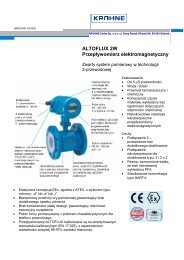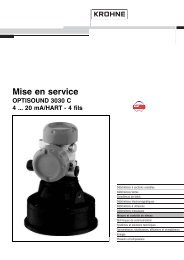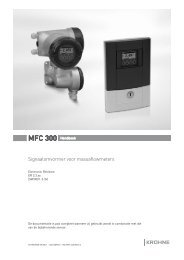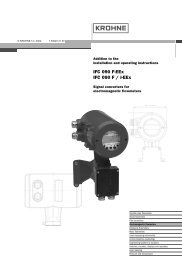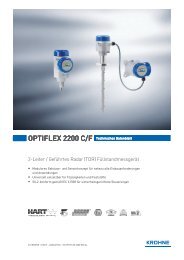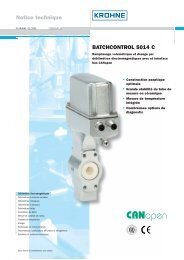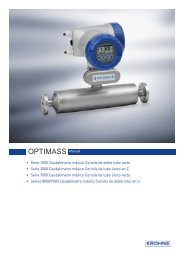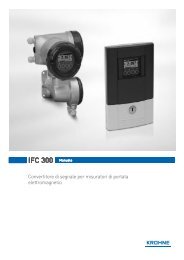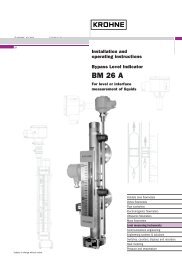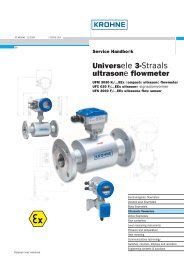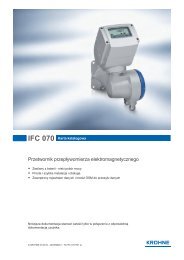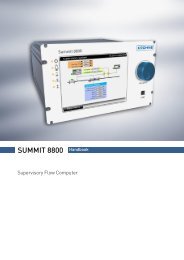OPTIFLUX Handbook
OPTIFLUX Handbook
OPTIFLUX Handbook
You also want an ePaper? Increase the reach of your titles
YUMPU automatically turns print PDFs into web optimized ePapers that Google loves.
1 INTRODUCTION<br />
<strong>OPTIFLUX</strong><br />
Electrode circuit, in type of protection "Intrinsic safety" (Ex ia), terminals 1, 2, 3, and 4:<br />
U i = 20 V , I i = 175 mA, C i ≈ 0 nF, L i ≈ 0 mH.<br />
The before mentioned intrinsically safe circuits shall, from the safety point of view, be<br />
considered to be connected to ground.<br />
The cable gland for the electrode circuit is - as intrinsic safe circuit - marked with a blue O-ring.<br />
The connection box contains terminals for the connection of the field current and electrode<br />
circuits:<br />
Field current terminals, in type of protection "Increased safety" (Ex e), terminals 7, 8 and 9:<br />
U < 40 V (switched DC voltage, alternately +40 and -40 V), I = 125 mA (injected square wave<br />
current).<br />
Electrode terminals, in type of protection "Intrinsic safety"(Ex ia), terminals 1, 2, 3 and 4:<br />
U i = 20 V, I i = 175 mA, C i ≈ 0 nF, L i ≈ 0 mH.<br />
The before mentioned intrinsically safe circuits shall, from the safety point of view, be<br />
considered to be connected to ground.<br />
The cable gland for the electrode circuit is - as intrinsic safe circuit - marked with a blue O-ring.<br />
EEx marking <strong>OPTIFLUX</strong> 5000 F "sandwich":<br />
Nominal diameter<br />
2,5...15 II 2 GD EEx me ia IIC T6...T3 T85...180°C<br />
25...100 II 2 GD EEx de ia IIC T6...T3 T85...180°C<br />
12<br />
www.krohne.com 11/2008 • 7.30948.24.00



